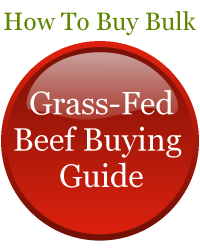Why Grass Finished Is Important
The term "grass fed" had become increasingly popular in the beef industry over the last few years to evoke images of idyllic, green pastures with cows contentedly grazing. However, with the growing popularity the term has been overused to the point that it is almost entirely meaningless
What Does "Finished" Mean in Beef?
From one of our most popular blog posts on the higher standard of grass finished beef:
[Finished] means that the animal is physically mature in skeleton and muscle and that it has some fatty tissue as well. This fatty tissue will be both exterior of the muscle (fat cover) and also interior of the muscle (marbling). Much (not all) of the flavor and tenderness of the beef will be related to the fat content of the beef.
In contrast, grass fed is currently being used in reference to any animal that 1.) was fed a grass-based diet prior to grain finishing or 2.) an animal raised on pasture but butchered while still in a growth or immature stage. This results in meat that is just like conventional feedlot beef (1) or beef that is very lean and contains little fat (2).
The Importance of Grass Finished
This term is much more descriptive of what we want. Grass finished means the animal has reached physical maturity and was kept on grass while developing exterior and intramuscular fat. No grain is ever fed to grass finished animals and this process will typically take from 24-36 months (compared to the 18-20 months for feedlot cattle). This is the largest factor why true grass finished beef will cost more than feedlot beef or lower quality grass fed beef. It is also why grass finished has superior health benefits and eating experience.
Now that you are informed, always choose grass finished from Brady's Beef.


